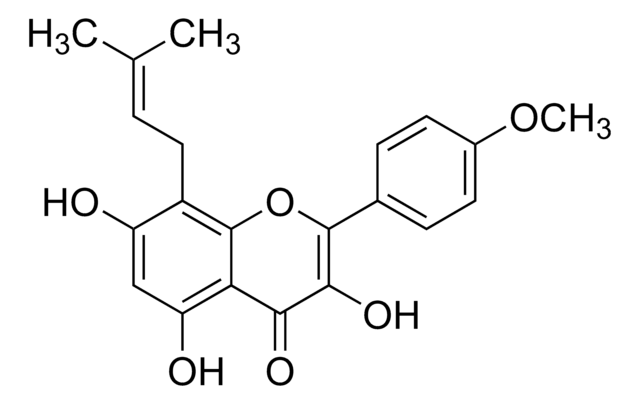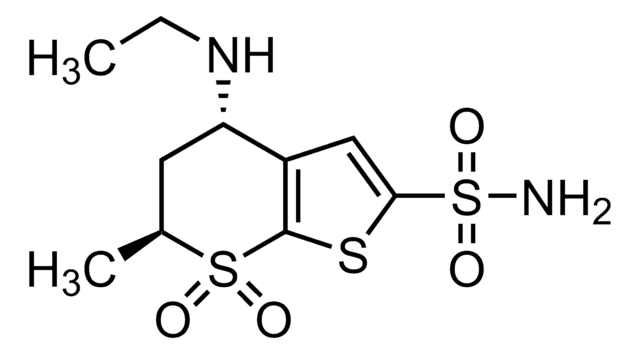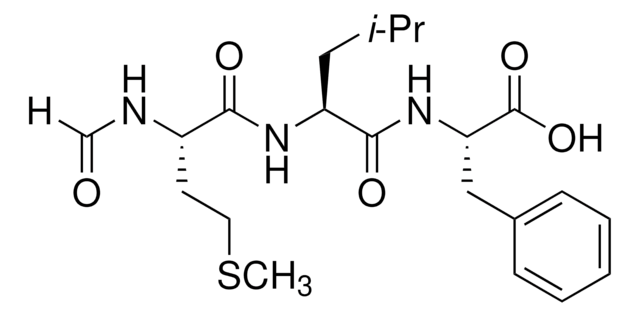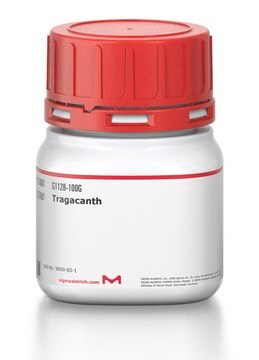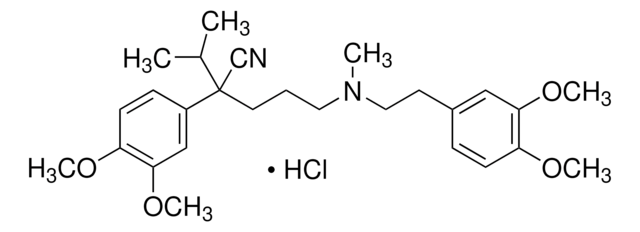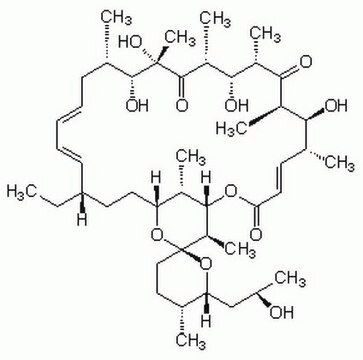SML1575
Cyclosporin H
≥97% (HPLC)
Sinônimo(s):
1,4,7,10,13,16,19,22,25,28,31-Undecaazacyclotritriacontane, cyclic peptide deriv, 5-(N-Methyl-D-valine)-Cyclosporin A
About This Item
Produtos recomendados
fonte biológica
Tolypocladium inflatum
Nível de qualidade
Ensaio
≥97% (HPLC)
forma
powder
atividade óptica
[α]/D -100 to -115°, c = 0.5 in methanol
condição de armazenamento
desiccated
protect from light
cor
white to beige
temperatura de armazenamento
−20°C
InChI
1S/C63H113N11O12/c1-26-28-29-41(15)53(76)52-56(79)66-44(27-2)58(81)67(18)34-49(75)68(19)46(31-36(5)6)60(83)72(23)50(39(11)12)62(85)69(20)45(30-35(3)4)55(78)64-42(16)54(77)65-43(17)57(80)70(21)47(32-37(7)8)59(82)71(22)48(33-38(9)10)61(84)73(24)51(40(13)14)63(86)74(52)25/h26,28,35-48,50-53,76H,27,29-34H2,1-25H3,(H,64,78)(H,65,77)(H,66,79)/b28-26+/t41-,42+,43-,44+,45+,46+,47+,48+,50-,51+,52?,53-/m1/s1
chave InChI
BQQHPBPTWWXRMU-SXHXJWHLSA-N
Aplicação
- to pre-culture the lineage depleted murine Flt3ITDIDH2R140Q BM cells for transduction
- as a formyl peptide receptor (FPR) antagonist to study the role of FPR1 in calcium mobilization in polymorphonuclear leukocytes (PMNs)
- as one of the small molecules to study its effect on the homology-directed repair (HDR) editing efficiency in human-induced pluripotent stem cells (iPSCs) and T cells
Ações bioquímicas/fisiológicas
Palavra indicadora
Danger
Frases de perigo
Declarações de precaução
Classificações de perigo
Acute Tox. 4 Oral - Carc. 1B - Repr. 1B
Código de classe de armazenamento
6.1C - Combustible acute toxic Cat.3 / toxic compounds or compounds which causing chronic effects
Classe de risco de água (WGK)
WGK 3
Ponto de fulgor (°F)
Not applicable
Ponto de fulgor (°C)
Not applicable
Certificados de análise (COA)
Busque Certificados de análise (COA) digitando o Número do Lote do produto. Os números de lote e remessa podem ser encontrados no rótulo de um produto após a palavra “Lot” ou “Batch”.
Já possui este produto?
Encontre a documentação dos produtos que você adquiriu recentemente na biblioteca de documentos.
Os clientes também visualizaram
Nossa equipe de cientistas tem experiência em todas as áreas de pesquisa, incluindo Life Sciences, ciência de materiais, síntese química, cromatografia, química analítica e muitas outras.
Entre em contato com a assistência técnica

